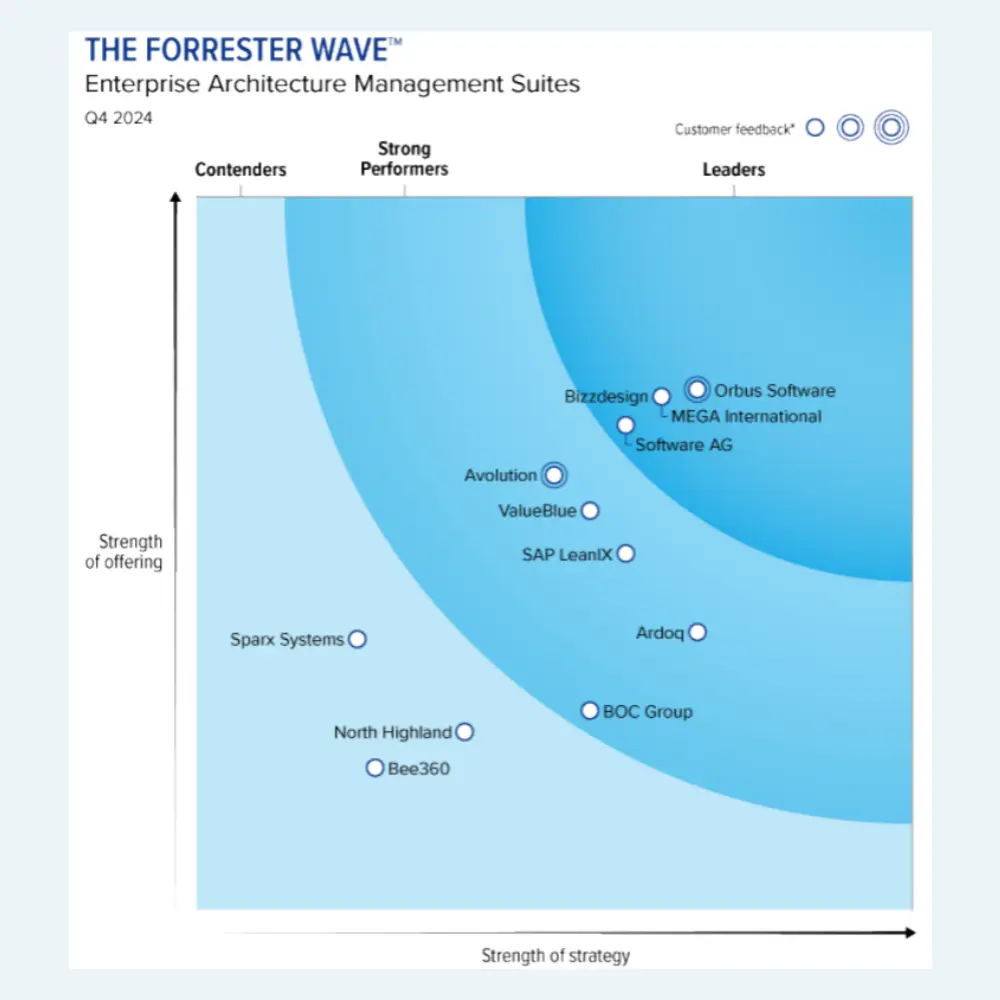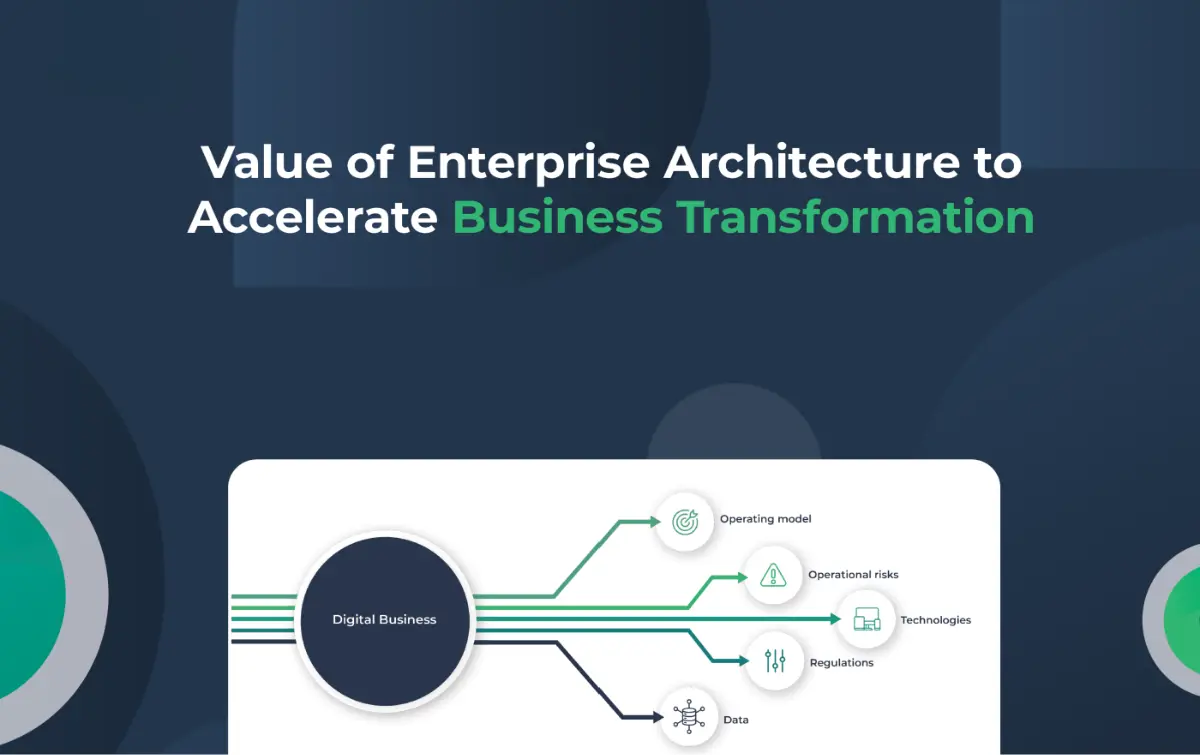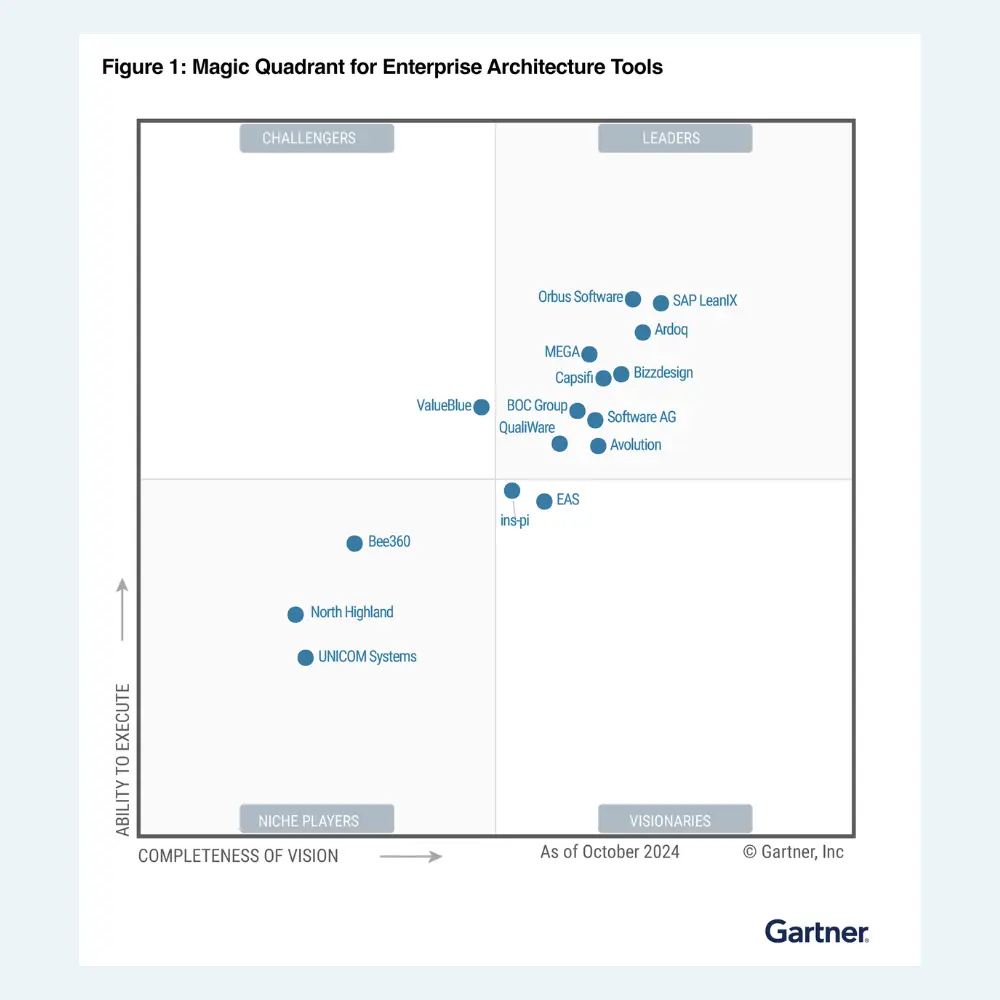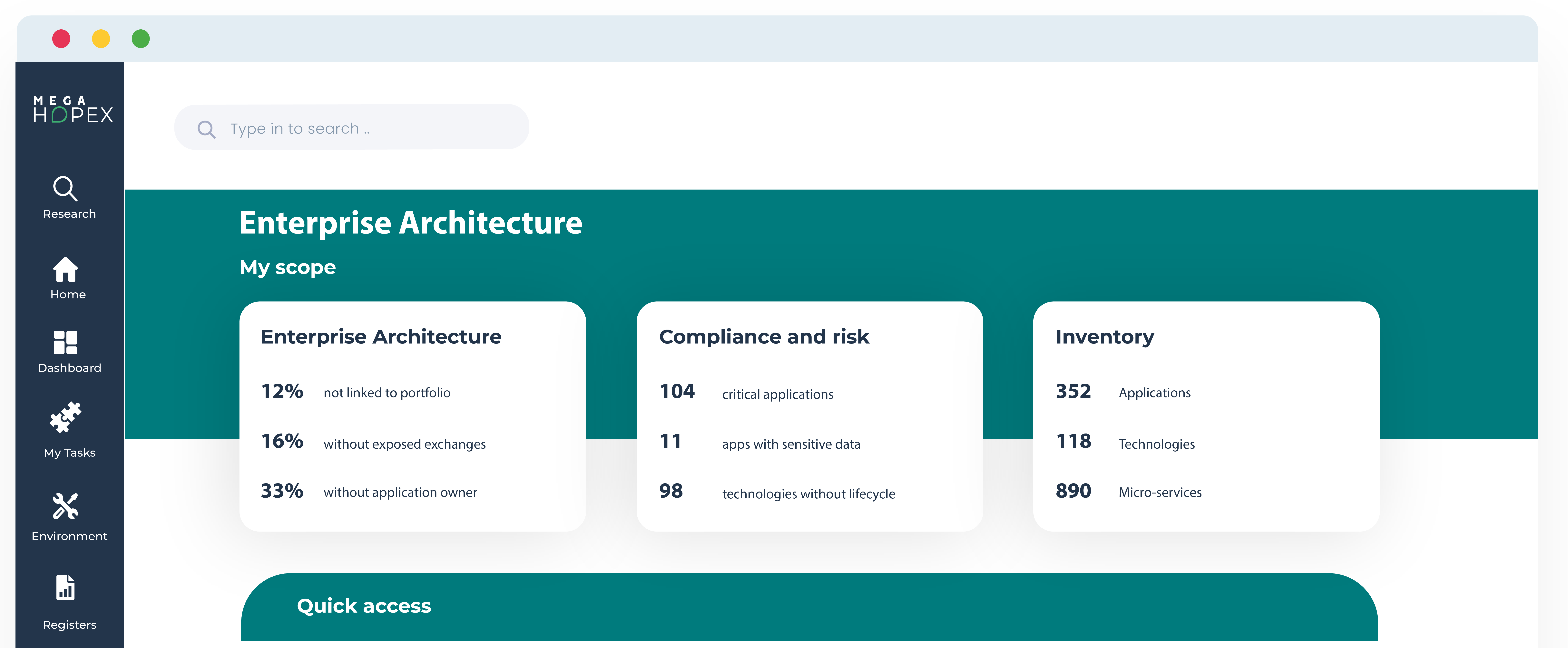
The Most Detailed, Up-to-Date Enterprise Architecture Repository
According to McKinsey, 75% of North American and European executives expect increased investment in new technologies through 2024.
As organizations invest more in digitization, decision-making must be based on quality data and readily accessible information. Enterprise data quality is rooted in a strong and well-maintained Enterprise Architecture (EA) repository that uses discovery to save time and increase quality.
Enterprise Architecture repository Definition
Enterprise Architecture repository is a term that describes a category of tools used to document and maintain the many components of an organization's IT architecture.
The repository is a central storage place for all architectural artifacts, such as frameworks, models, and patterns. Organizations can create more efficient designs by using a repository to store this data by taking advantage of reusable components.
Access to these elements in one place allows users to quickly assess their current architectures against new business requirements or technological advances.
What is an EA artifact repository?
An EA repository is a collection of artifacts that describes an organization's current and target IT landscape. It is intended to provide a centralized place to store and retrieve architectural artifacts. An EA repository should have the key logical components of the architecture metamodel, domains, principles, capabilities, governance documents, and reference library.
Organizations benefit from having a clear and documented approach or framework to conduct EA projects, including artifact templates, capability maps, and more. It stores the “as-is” architecture so gap analyses can be done to build “to-be” architectures and help identify opportunities to shorten time-to-market, reduce costs, and identify operational and technology improvements.
About Open-source enterprise architecture repository
There are many online repositories for software applications, including EA tools. A repository is simply a location where software is stored and can be accessed by users. Many repositories are open source, meaning anyone can contribute to and improve the software. The benefits of using a repository include accessing the latest software versions, trying out new features, and getting support from other users.
Open-source enterprise architecture (EA) repositories are invaluable tools for organizations looking to map IT projects, analyze business processes, and understand their relationships. An EA repository stores all related data in a single location.
This makes it easy to access data quickly when making decisions about new solutions or existing systems. Additionally, open-source repositories provide an opportunity to collaborate with peers who may have similar technical goals and objectives. This collaboration can help ensure that projects remain on track and that best practices are utilized throughout any project's lifecycle.
An open-source EA repository provides a platform for collaboration and offers numerous features designed to streamline the process of documenting and organizing data associated with individual projects.
Architecture repository management
With all these components, getting the right pieces of information into the EA repository is no small undertaking, and keeping it updated (is critical for EA's success). Enterprise architects are drowning, trying to keep up with data accuracy, and are unable to reach the finish line as companies are dynamic and ever-evolving. Thus, the finish line keeps moving further.
This frustration is what architects mean when they talk about “death-by-repository.” In this scenario, EAs spend all their time trying to keep an "as-is" architecture up-to-date and, thus, do not have the availability to practice "to-be" architecture focused on business outcomes.
Architects who build and maintain an EA repository may manually import spreadsheets from Excel, CMDB, etc. Of course, manual takes a lot of time and is prone to error. While building a shared repository from scratch is possible, this can become time-consuming, and EAs risk falling behind.
Further to this point, the repository's design needs specific consideration, given that many people using the repository won't have everyday knowledge of where and how to find data. With proper tooling, however, there are easier ways EAs can begin to populate and design the EA repository.
Benefits of EA repository management
Death-by-repository fears are eliminated with discovery and connectors that reach across technologies, creating a common language. At its very core, the purpose of an EA repository is to drive connectedness to enable shared insights and overviews of relationships and interdependencies.
Reducing the friction of updating an EA repository benefits the company with more accurate data for stakeholder decision-making. It allows enterprise architects to do other, more value-oriented projects supporting business outcomes. Further, on average, developers spend only 5% of their time writing new code, 20% modifying the legacy code, and up to 60% understanding the existing code. Reducing time and manual work will allow developers and architects to focus on “to-be” future scenarios.
Some examples of different types of EA discovery
Enterprise Architecture deals with many concepts, including applications, technologies, processes, and data. To facilitate the population of an EA repository, there are four types of discovery to build, manage, and optimize information that can save considerable time and costs – and increase the quality of data and decision-making.
- Application discovery is a process through which applications installed and used throughout an enterprise are identified and collected. It provides visibility into server activity, collecting and presenting configuration, usage, and behavior data from servers, allowing one to get a total picture of the server workload.
Application discovery can reduce risk during code modernization by helping to understand the structure and interdependencies of legacy applications. It creates an inventory of all technical assets, which can help improve maintenance and operations, and delivers a strategy for future-state IT and modernization. Application discovery helps enterprise architects understand and manage metadata associated with each application, which is used to build an EA repository. - Cloud discovery automatically discovers all cloud instances spanning applications, databases, and related services running at a given time. As organizations continue to increase cloud usage, understanding the enterprise’s cloud footprint is essential for security and auditing functions to know where and how to manage rogue and unmanaged deployments and identify shadow IT to reduce risk exposure.
Cloud discovery is vital in helping enterprises struggling to manage their multi- and hybrid cloud instances by enabling enhanced visibility, improved optimization, and reduced risk to maximize return on cloud investments. Cloud discovery helps enterprise architects and technology innovation leaders understand their cloud footprint and where/ how to manage potential gaps. - Process mining transforms data into event logs and then creates visualizations of the end-to-end process and insightful analyses, allowing you to compare what was designed with the actual process. It uses event logs to show what people, machines, and organizations are doing and provides insights on improving and addressing performance, bottlenecks, and compliance breakdowns. Process mining helps enterprise architects and technology innovation leaders understand operations and performance to optimize processes.
- In IT, data discovery is an exercise that allows a company to find its data stored in databases, build a data catalog and an enterprise glossary, and model the data architecture. Data discovery consists of collecting data from various sources by detecting patterns and outliers, which allows consolidation of the company's situation. This exposure allows architects to build a data dictionary, create an enterprise glossary, and design data models. They can also perform data lineage analysis and ensure data compliance. Data discovery helps enterprise architects and technology innovation leaders visually understand where data is located and how it is leveraged within the organization.
Find out about the Application Portfolio Management.
Repository structure: APIs and Connectors used by Enterprise Architecture tools
Many tools are available to help enterprise architects design and manage their systems. These tools use APIs and connectors to allow integration with other systems.
API stands for “Application Programming Interface.” An API is a set of rules and protocols that allow software components to interact with each other. Connectors are software components that provide a connection between two or more applications.
There are two ways to connect access points and thus share data through
EA tools can use APIs and connectors to databases, web services, and other applications to exchange data and perform various tasks. For example, a tool might use an API to retrieve data from a database and then use a connector to send that data to another application for further processing.
- APIs. The code governs the server's access point(s). APIs are especially useful because they allow one to continuously query an application, get data, and view or use it in another application.
- Connectors are the pieces that connect to the API and pass that data to the next message processor as a data stream. A Connector is for an application, and a VPN is for a Network. They should exist only for proprietary applications that cannot expose services as APIs.
An EA tool with a dynamic, connected repository allows architects and developers to browse and drill down on relevant details, enabling them to conduct impact analyses and plan migration projects. Tools that use APIs and Connectors to conduct discovery are handy as they allow enterprise architects to start providing value on Day One.
Third-party integrations or connections with CMDBs and other solutions from software providers like ServiceNow, Flexera, SAP, Salesforce, and Microsoft, or with structured and unstructured databases such as MongoDB; and many other technologies help EAs build a repository instantaneously and maintain it with quality information.
The possibilities are almost endless when an EA tool uses APIs and Connectors to connect and build upon data. Since many different types of APIs and connectors are available, each has its strengths and weaknesses. Choosing the right ones for your needs can be challenging, but doing so is essential for ensuring that your EA tools work effectively.
Discovery saves time and increases quality.
Discovery is the population and maintenance of applications, processes, and data, so companies can manage and optimize their EA repository and feel confident about its accuracy and quality. It uses open APIs, integrations, and connectors that fetch the right data. Discovery can also be associated with artificial intelligence, which detects patterns and performs advanced analyses.
The benefits are tangible:
- It quickly populates the EA repository by connecting to operational data.
- It ensures quick time-to-value, increases data accuracy, and can be relied upon for decision-making.
- Reports and analytics can be created and leveraged instantly.
- Architects can use these insights to drive business intelligence and design “to be” states—and not have to spend time on the "as is" current state, as it's already done.
- EA's perceived value inherently moves from noisy to influential.
Summary
An enterprise architecture repository is an invaluable tool for any organization, large or small. It can help streamline workflows and facilitate collaboration across departments. It also makes it easy to store and organize essential data that may be needed. Additionally, with a repository, organizations can easily track changes to their architecture and better understand their impact on their operations.
The discovery not only speeds up the population of the EA repository but also frees enterprise architects to focus on business outcomes that can support agile delivery and digitization. Ultimately, it ensures the EA repository is a single source of truth for IT standards that users and stakeholders can rely upon to make smarter, faster decisions.
FAQs
An EA repository is a collection of software tools and components that support implementing An EA practice. The repository provides a common place for storing and sharing EA artifacts, such as models, templates, and reference architectures. It also enables collaboration among EA practitioners and facilitates the adoption of best practices.
An EA repository is a valuable tool for IT organizations because it provides a centralized location for storing and managing enterprise architecture artifacts. Having an EA repository can help improve communication and collaboration between architects, reduce duplication of effort, and make tracking and managing changes easier.
The value of Enterprise Architecture to accelerate business transformation
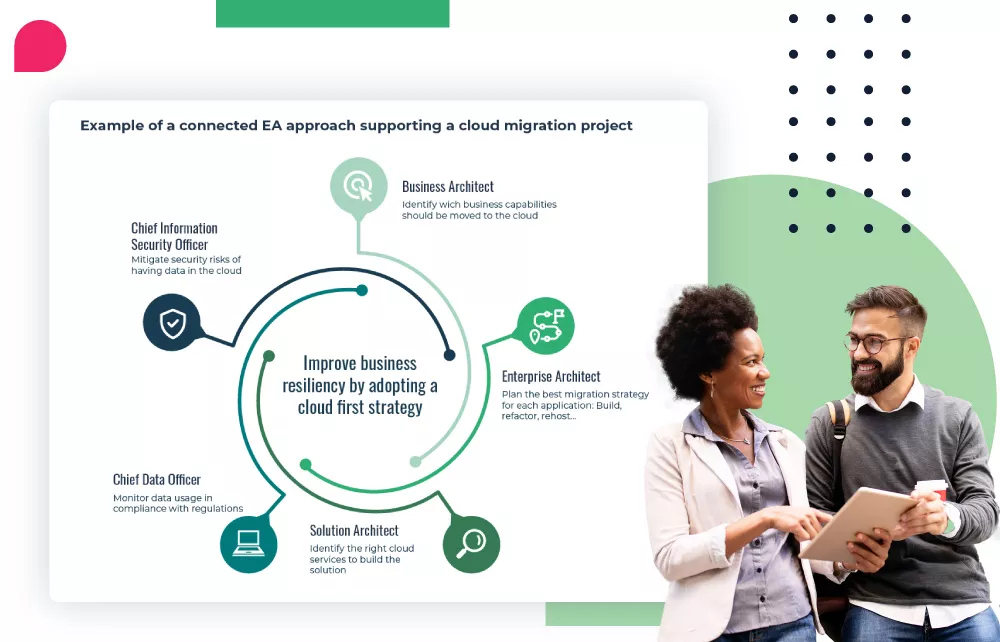
Access this white paper to learn:
- The evolution of the enterprise architecture practice
- How to Deliver Value through a Connected Enterprise Architecture Practice
- Strategies for Adopting a Business-Outcome-Driven Approach
- How to Use Data-Driven Tools to Enhance Your Enterprise Architecture Connectivity
Enterprise Architecture Related Content
Shift from a documentation tool to an operational tool and accelerate business transformation
MEGA HOPEX for Enterprise Architecture
Request a demonstration of HOPEX for EA, and see how you can have immediate value of your projects.








